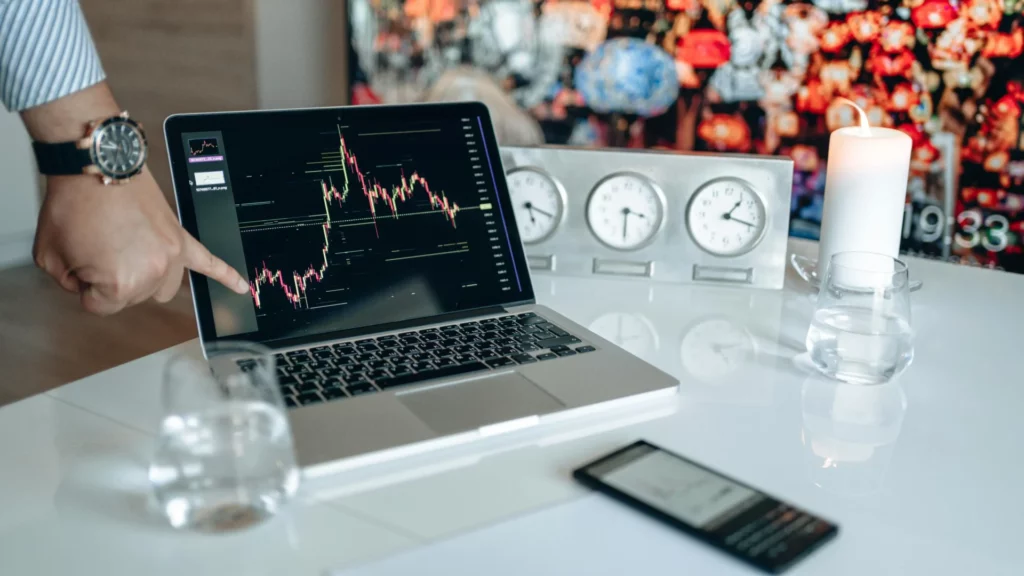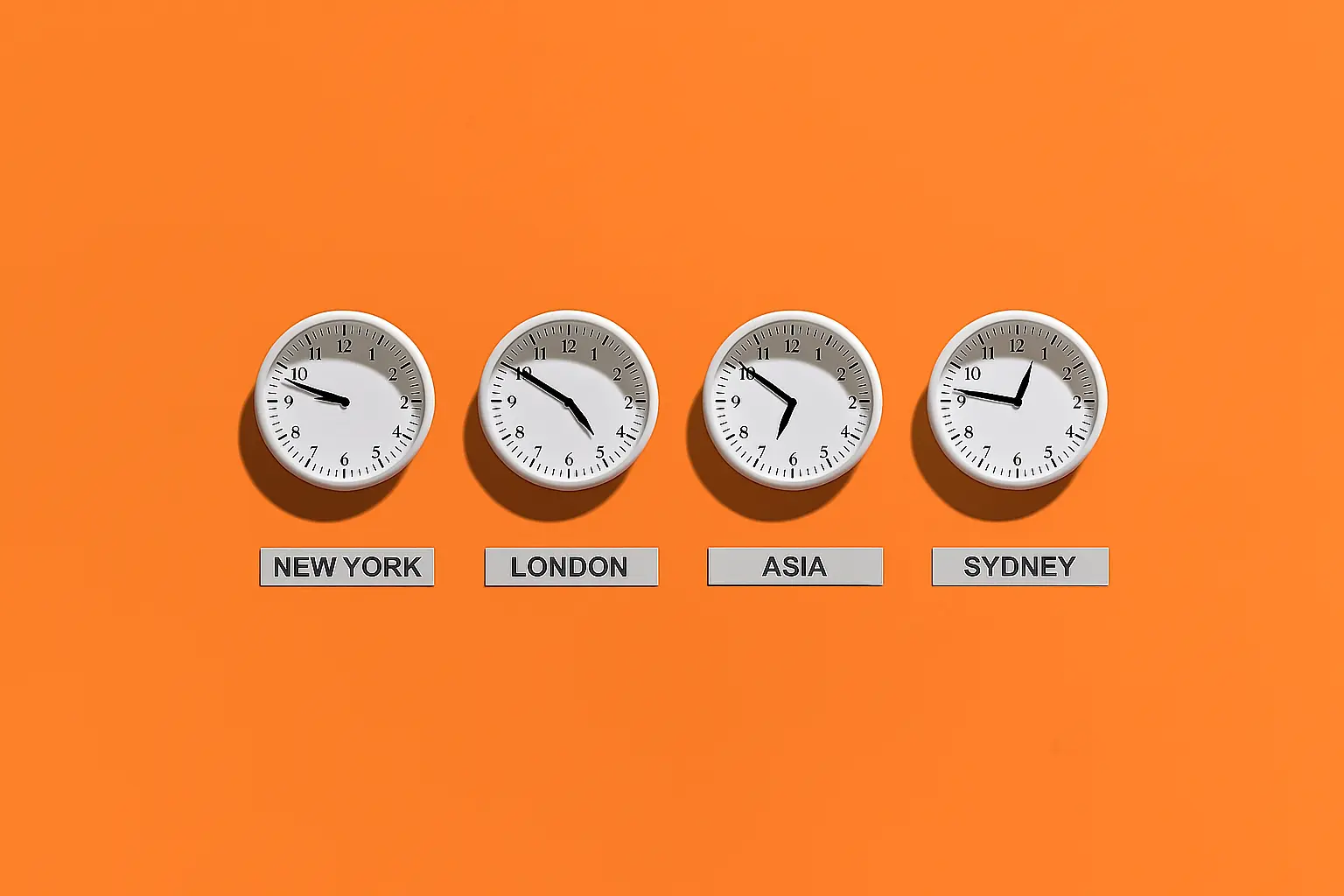Best Forex Pairs to Trade in 2025: Complete Guide by Trading Style
Written by Rachel on November 10, 2025.Did you know that you may not be trading with the best forex pairs for your trading style? Choosing the right pairs and right amont can make all the difference in your consistency and results.
87% of new traders fail because they trade too many pairs simultaneously. Its east to understand why, there are over 100 currency pairs, and when they’re all flashing on your screen, moving 24/5, it’s easy to feel like you should be trading everything. The pairs you trade can either help you stay consistent or drag you into drawdown.
This guide will help you narrow down 100+ pairs to your perfect 2-3. In this article, we will walk you through:
- What currency pairs are
- What you need to consider before choosing the best currency pairs to trade
- How to build a simple, effective watchlist that suits the way you trade
What Are Currency Pairs?
A currency pair is simply two currencies traded together in the forex market. It tells you how much of one currency you’d need to exchange for one unit of another. In summary, it’s how much one currency is worth compared to another.
Every pair you’ll see has two things:
- A base currency: This is the first currency in the pair, and it’s always equal to 1.
- A quote currency: This is the second one, and it shows how much of it you need to get 1 unit of the base. Let’s break that down further.
Look at GBP/USD: GBP (British Pound) is the base and USD (US Dollar) is the quote, so if GBP/USD is at 1.2156, that means 1 British Pound = 1.2156 US Dollars.
When you’re trading this pair:
- If you buy, you’re buying the Pound and selling the Dollar, expecting the Pound to rise.
- If you sell, you’re selling the Pound and buying the Dollar, expecting the Pound to fall.
Every time you open a trade in forex, you’re doing this, buying one currency while selling the other, and vice versa. Not sure which pairs fit your style? Join our Discord community to speak with other experienced traders or continue reading.

How to Assess the Best Forex Pairs for Your Trading Style
Note: When you are starting, it’s best to stick with the major pairs. They’re more stable, have tighter spreads, and are easier to understand, all of which helps you stay focused and avoid unnecessary risk. With that said, let’s dive into other things to consider.
1. Your Trading Style
The way you trade should shape the pairs you choose. If you’re a scalper, you need tight spreads and high liquidity. For scalping, stick to major pairs like EUR/USD, USD/JPY, and GBP/USD. These pairs are active during key sessions, cheap to trade, and respond well to short-term setups.
If you’re experienced, you can also scalp minor pairs like EUR/JPY or GBP/JPY, However you must stay mindful of spread. Some pairs that aren’t ideal for scalping are EUR/GBP or AUD/NZD because they move slower and often have higher spreads, so they’re generally not ideal unless you’ve tested them thoroughly.
On the other hand, swing traders need pairs that trend well over time and respect market structure, the JPY pairs are well-known for this. For example, USD/JPY was in a downtrend from Jan 13th, 2025 to 26th May, 2025 making it perfect for swings. USD/TRY or EUR/ZAR also trend beautifully, but with a prop firm, you might experience high spreads which makes it unadvisable.
2. Volatility
Volatility is how much and how quickly a currency pair moves in price. High volatility means the price moves up and down a lot and fast, sometimes in just a few minutes. This creates more opportunities to make (or lose) money. Pairs like XAU/USD (gold) and XAG/USD (silver) are known for being highly volatile, that means they can move hundreds of pips in a single session. For traders who like quick trades and big moves, these sorts of pairs can be ideal.
But volatility goes both ways. While it offers more potential reward, it also means the market can reverse sharply. So if you’re trading volatile pairs, your risk management has to be tight. Think clear stop-losses, realistic targets, and staying emotionally neutral even when price gets aggressive.
3. Time of Day You Trade
Think about your daily routine. You’ve got to ask yourself: when is the best time to trade? The forex market might be open 24/5, but that doesn’t mean that all the pairs are moving 24/5. Let’s break it down:
- If you wake up a few hours before London opens, you’re in the perfect spot to trade majors like GBP/USD, EUR/USD, and USD/CAD. That’s when the market starts heating up, volume kicks in, and you’ll get clean price action.
- If you work and can only trade during the New York session, you still get good moves, it’s fast, liquid, and a sweet spot for a lot of prop traders.
- If you live in a time zone where you’re asleep during both London and New York, then your available trading time is during the Asian session so try trading pairs like GBP/JPY or AUD/JPY. These pairs tend to move more steadily during the Asian session while the rest of the market is quiet.

So here’s the bottom line:
Trade when you’re awake and pick pairs that are awake when you are. The more your pairs match your schedule, the smoother your trades and your trading life will be.
4. Don’t Trade Too Many Pairs
One of the biggest mistakes new traders make is trying to watch everything, major pairs, minors, metals, exotics, all at once. It feels productive, but it just creates noise and confusion.
You don’t need 10 charts. You need 1 to 3 good ones that match your style and session for example: EUR/USD (major), AUD/JPY (minor) and XAU/USD (metal wildcard). That mix gives you variety, but keeps things manageable. You’ll actually get to know how each pair moves, reacts to news, respects structure and that’s what builds consistency.
Especially in a prop firm account, it’s smarter to stay focused. Exotic pairs might tempt you with big moves, but they also bring high spreads, slippage, and risk of rule violations.
How to Build a Watchlist of the Best Forex Pairs for Your Trading Style
Your watchlist shouldn’t be random, it should fit the kind of trader you are. Build it based on your available hours, your strategy (scalping vs swing), your experience level, the prop firm rules you’re trading under. The chart below will help you answer which forex pairs should I trade as a beginner.
| Pair | Best For | Volatility | Spread | Active Session |
|---|---|---|---|---|
| EUR/USD | Beginners, Scalpers | Medium | Lowest | London/NY |
| GBP/USD | Scalpers, Day Traders | High | Low | London/NY |
| USD/JPY | All Styles | Medium | Low | Asian/NY |
| GBP/JPY | Swing Traders | Very High | Medium | London |
| XAU/USD | Experienced Traders | Very High | Medium | London/NY |
If you trade during London hours and prefer swing trading, a watchlist like EUR/USD, GBP/JPY, and XAU/USD might make sense. However, if you only have time during the Asian session and like scalping, something like USD/JPY, AUD/JPY, and NZD/USD could be a better fit.
The fewer pairs you track, the better you’ll know them and the more confident you’ll be when it’s time to trade.
💡 KEY TAKEAWAY
Scalpers should focus on EUR/USD, USD/JPY, and GBP/USD during London and New York sessions for optimal spreads and liquidity.

Frequently Asked Questions
What are the best forex pairs for beginners?
EUR/USD, USD/JPY, and GBP/USD are ideal for beginners due to tight spreads, high liquidity, and predictable price action during major trading sessions.
Which forex pairs are most volatile?
XAU/USD (gold) and XAG/USD (silver) are highly volatile, along with exotic pairs like USD/TRY and GBP/JPY during key sessions.
What time should I trade forex pairs?
Trade during sessions when your chosen pairs are most active: London (3 AM-12 PM EST) for EUR/GBP pairs, New York (8 AM-5 PM EST) for USD pairs, Asian (7 PM-4 AM EST) for JPY pairs.
How many forex pairs should I watch?
Focus on 1-3 pairs that match your trading style and schedule. This allows deeper understanding of price behavior and improves consistency.
Final Thoughts on Choosing the Best Forex Pairs for Your Trading Style
The currency pairs you choose have a bigger impact on your trading than most people realize. They affect how often you get setups, how your strategy performs, and how well you manage risk day to day.
That’s why it’s so important to choose pairs that actually fit you and if you’re working with a prop firm, this becomes even more important. You’re not just trying to catch good trades, you’re trying to stay within rules, avoid violations, and stay funded. That’s where Maven stands out. Maven makes it easy to focus on the best forex pairs for your trading style – helping you stay consistent, funded, and confident in every trade. Start with Maven today.



